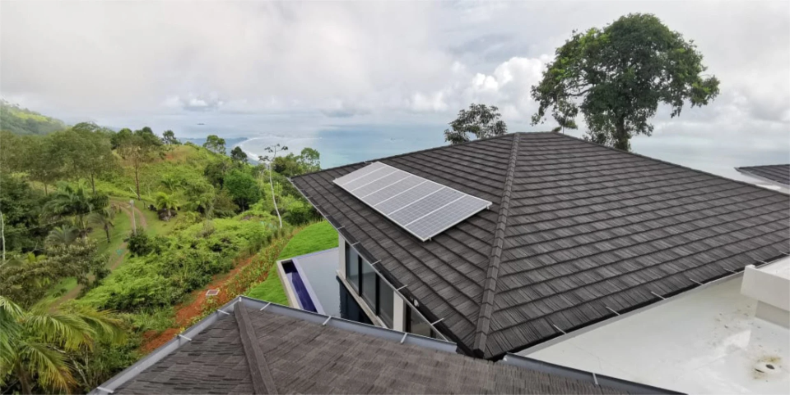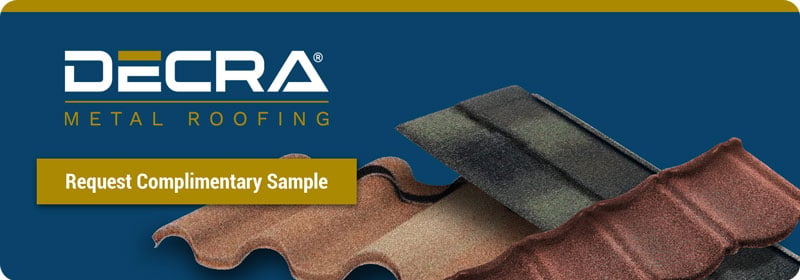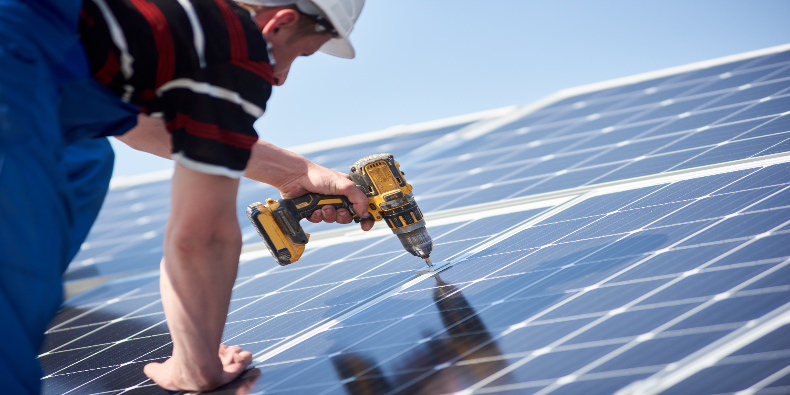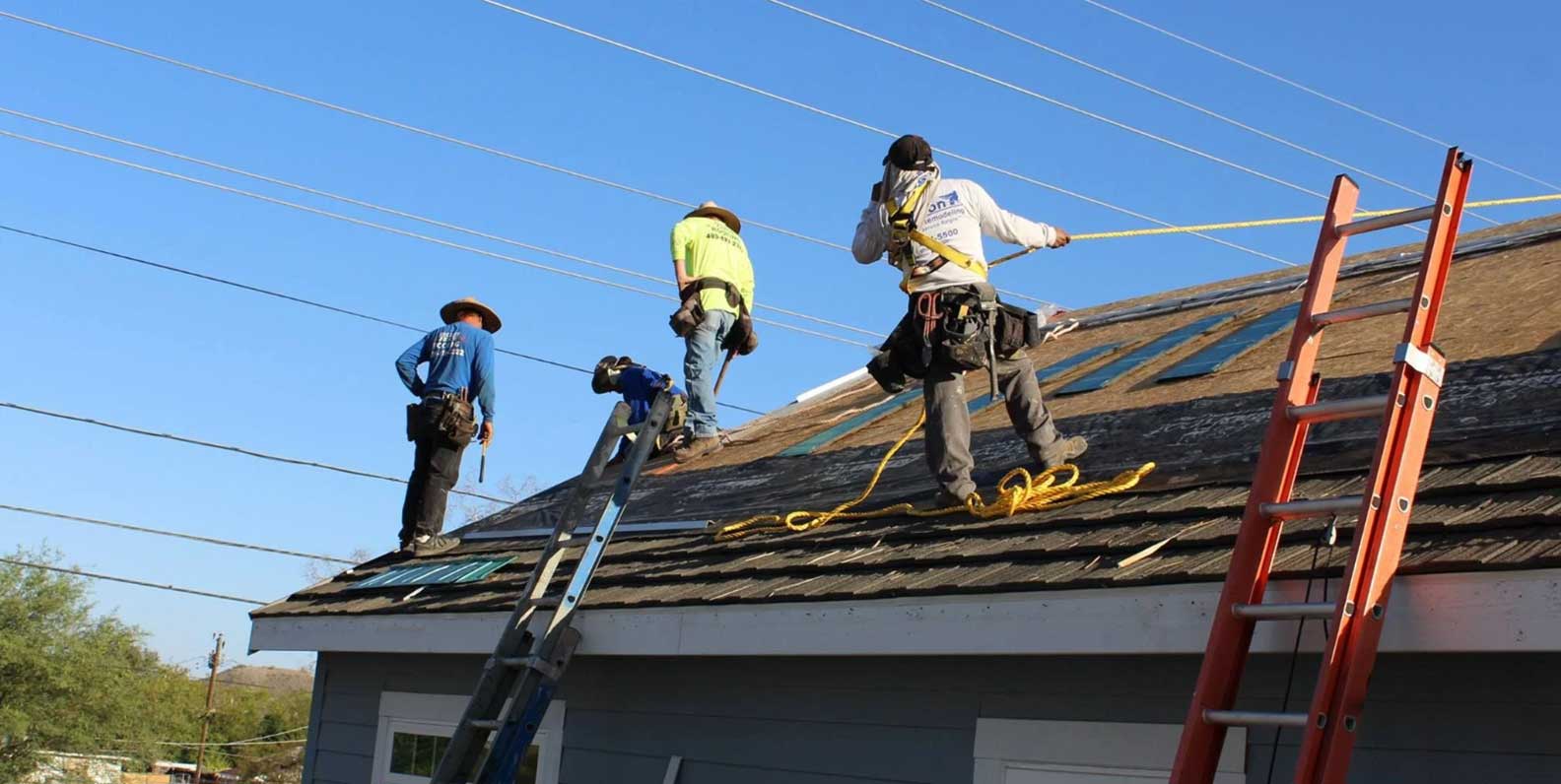If you’re adding solar panels to your home, you’re probably thinking a lot about which system to purchase and how much energy you’ll save. But you should also consider whether your roof can support a solar energy system. Installing solar panels is the perfect time to schedule a roof remodel, especially if your current roof isn’t up to the task.
Not sure what kind of roof is best for solar panels?
- Why you want to pick the right roofing material before installing solar panels
- The three essential elements a roof must have for safe, efficient solar performance
- Bonus advantages of choosing a DECRA metal roof for your remodel
You can save yourself a significant amount of money and eliminate many hassles if you select the right roof from the start.
Why the Right Roof Is Essential for Solar Panels
Roofing material has a major impact on how well your solar panels perform, and may even affect the safety and structural integrity of your home.
One of the biggest considerations homeowners overlook is roof lifespan. Once your solar panels are installed, the last thing you want is to remove and reinstall them 10–12 years later because the roof needs to be replaced. Unfortunately, that’s exactly what happens with short-lived materials like asphalt shingles.
Asphalt shingles often require replacement every 12 years, or sooner if damage goes unrepaired. Delayed repairs accelerate deterioration and shorten the roof’s lifespan even more.
What happens if a roof needs to be replaced once solar panels are installed?
- You have to remove the panels during the process of the roof remodel, making them unusable during this time period.
- You have to align the schedules of your roofing contractor and your solar expert to minimize panel downtime.
- The homeowner has to cover the cost of reinstallation, which can run thousands of dollars, depending on the number of panels.
- The removal and reinstallation of solar panels adds multiple days to the timeline of a roof remodel, which is a hassle for property owners.
This is why long-lasting materials, like metal roofing, are ideal. Metal roofs last 40–70 years, which is two to three times longer than asphalt shingles, ceramic tiles, or wood shakes. With a metal roof, you can typically install solar panels once and not worry about roof replacement for decades, often for the entire time you own the home.
Adding Solar Panels to a Roof: 3 Key Requirements
To choose the best roof for solar panels, focus on these three critical factors.
1. Weight of the Roofing Material
Solar panels weigh between roughly 33-50 pounds each, with the average panel weighing 40 pounds. Depending on your energy needs, you should plan on installing at least 15- 21 panels, more if you have a larger home or plan to use a lot of solar power.
That means you’re adding an average of 600-840 pounds of extra weight to your roof. So, you don’t want roofing material that’s also on the heavy side, or you may need to add structural improvements to the home’s frame, which is extremely costly, disruptive, and not feasible for most homeowners.
Therefore, you want a roofing material that’s lightweight and won’t add unnecessary weight to already heavy solar panels. Here’s a comparison of several popular roofing choices with their pros and cons:
| Roofing Material | Advantages | Disadvantages |
| Asphalt shingles |
|
|
| Clay tiles |
|
|
| Concrete tiles |
|
|
| Wood shakes |
|
|
| Metal roofing |
|
|
Metal roofing stands out for pairing low weight with exceptional strength, making it an ideal match for solar energy systems.
2. Load-Bearing Capacity
Load-bearing capacity and roof weight go hand in hand. You want roofing material that is both lightweight but sturdy enough to hold solar panels without adding expensive reinforcement. The only two choices in this category are metal roofing and some wood shakes. However, the negatives associated with shakes make them impractical for most homeowners installing solar panels.
If you live in a snowy region, remember your roof must also support the weight of accumulated snow. Metal roofing consistently performs best in these conditions.
3. Solar Reflectivity
Did you know that solar panels perform best at around 77 degrees Fahrenheit? For every degree above that temperature, you lose about 0.45% of efficiency. That’s a 13.5% loss on a 107-degree day, which isn’t uncommon in places like inland Southern California and Arizona.
If it’s hot year round where you live, your roof’s ability to absorb or reflect the sun’s rays will constantly affect the functionality of your solar panels. But even if you live in a northern tier of the country, you may still experience hot summers. In fact, new research shows that summers around the nation are getting longer and hotter.
Asphalt shingles are like a sponge, soaking up the sun, making the roof super hot—up to 150 degrees in direct sun. By contrast, DECRA stone-coated metal roofing reflects sunlight to avoid the buildup of heat. You can actually decrease hot weather cooling costs by installing DECRA, on top of the savings you’re already enjoying by using solar power.
Bonus Reasons to Choose DECRA for a Solar Roof
You’ve already read about how DECRA metal roofing is ideal for a solar roof because of its sturdiness, light weight, and reflectivity, as well as its sustainability. Here are a few more benefits that make it a terrific investment:
- Excellent weather resistance, with the ability to withstand large hail and high winds
- The highest UL fire rating possible, as more regions are affected by wildfires
- Potential for insurance discounts, when insurance companies are dropping clients
- Ability to increase your home’s value by up to 6% for higher equity or resale price
- Lifetime limited warranty that can be transferred to a new owner upon property sale
- Curb appeal with many color options and profiles mimicking shingles, shakes, and tiles
See for Yourself How Lightweight DECRA Is
You won’t believe how lightweight DECRA metal roofing is until you hold it in your own hand. Simply request a complimentary sample to feel the difference and compare it with heavier, shorter-lived options like asphalt shingles.
Ready to choose a DECRA profile for your solar roof? Explore our gallery to see other houses like yours, and try our online visualization tool to see how a DECRA roof would look on your home.
Editor’s Note: This blog was originally published in July, 2024 but has been updated with relevant information.






